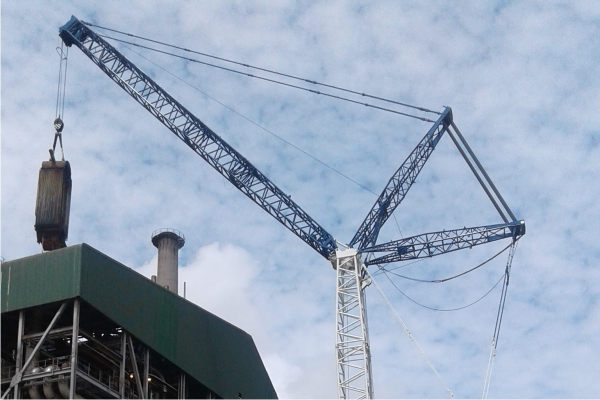Construction, manufacturing, and cargo industries all use cranes and other lifting equipment. Lifting operations are risky, so plan carefully to avoid accidents. In addition, the load itself needs to be prepared for lifting, a procedure called rigging. Rigging safety is crucial on jobsites where there's a lot of lifting. Basics of rigging safety
Basics of rigging safety
Rigging safety can prevent a lot of accidents during lifting operations, avoid property damage, and protect workers. Loads that aren't secured properly can fall even if the crane is only lightly loaded. Safety manuals and proper rigging equipment must be provided, and workers must be trained.
Basic rigging equipment: Slings and hardware
In order to cover all aspects in depth, rigging requires a complete course. There are a few rigging principles that apply in most cases, though:
Rigging the load with the right slings and hardware.
Choosing the right hitch for the load, or how it's attached to the lifting equipment.
Slings are usually classified by the material they're made from. Synthetic slings are made of high-strength plastic, and they can be round or web-shaped. They can also be made of wire rope or alloy steel chains. Hooks, shackles, eye bolts, and wire rope clips are rigging hardware that is used to connect slings and other components. Slings should be attached with hardware, never tied directly.
A proper hitch makes sure the load doesn't tilt, rotate, or slip. Let's look at three types:
- Vertical hitch: The load hangs directly from the crane, using a vertical sling. A bridle hitch is a variation of this, where the load is slung at an angle instead of a vertical sling.
- Choker hitch: The sling circles around the load so one end is attached to the sling, and the other is attached to the crane.
- Basket hitch: The sling circles the load in this hitch, but both ends hook onto the crane.
Inspection of all slings and hardware is a must before any lift. It is essential to check a sling's entire length for damage as even minor damage will reduce its loading capacity. Rigging hardware should also be checked for signs of damage, such as welding marks, deformations and cracks.
Rigging best practices
1. Never work under suspended loads
Rigging safety reduces the risk of dropping a load, but does not eliminate it. Rigging should not be adjusted while a load is suspended, and all work should be performed while the load is on the ground. During a lift, the entire area under the load path needs to be considered and kept clear.
2. Never leave a suspended load unattended
Leaving a load unattended poses several risks, even with adequate rigging and a crane of sufficient capacity. Changing weather and strong gusts of wind can exert large forces on a hanging load, for example. This can cause the crane to become unstable and collapse.
3. Make sure the load hook and suspension line up straight
The rated capacities of slings and rigging hardware only apply when they're aligned correctly. If a connection is at an angle, like a bridle hitch, the load capacity has to be derated. Additionally, the rigging team must make sure loads are applied to the center of hooks and other hardware, otherwise their capacity is reduced.
4. Never lift people with a hoist
Lifting personnel should only be done on a mobile elevated work platform (MEWP), or another device that is designed for that purpose. When it comes to lifting improvised work platforms, using a crane or hoist is extremely dangerous and, in most cases, illegal. Static loads have a fixed center of gravity, but the weight distribution changes when workers move around.
5. Ensure that the load is balanced
Loads that are unbalanced can easily tip over or rotate once they are lifted from the ground, making them very difficult to control. Imbalanced loads are more likely to fall, and the crane itself may collapse. Cranes only apply tension, so a rotating or swinging load can destabilize it. Loads become unstable when the lifting force is not aligned with their center of gravity. Marking the center of gravity simplifies the job for both rigging teams and crane operators.
6. Provide a qualified spotter on site
An experienced spotter can prevent many lifting accidents. The spotter can detect many threats before anyone else, such as unstable loads and rigging errors. If a spotter identifies an unstable load immediately after it has been lifted, the crane operator can be instructed to lower it. However, lowering an unstable load on the spot may not be possible if it has already traveled some distance. The spotter should maintain regular communication with the crane operator and the rigging team.
In all workplaces where lifting is involved, basic rigging safety is paramount. In order to prevent accidents, rigging is crucial for securing a load to a crane. Even if the crane is capable of lifting 100 times more weight, a load may fall due to improper rigging.
This article offers an overview of basic rigging principles, and is not a substitute for formal training. Rigging personnel on sites with lifting equipment should be highly qualified. Educating employees and making sure they are aware of the risks associated with heavy lifting can help create a safer work environment.

